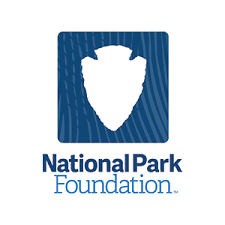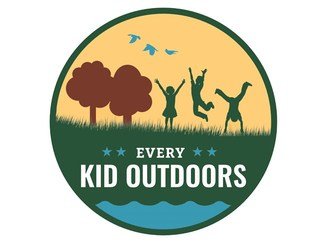gratitude is like sunlight breaking through the branches of a forest. even in small rays, it warms the heart and nourishes growth. in early childhood, gratitude is not a grand gesture or a polished thank-you—it is a seed planted through daily moments of kindness, recognition, and connection. when nurtured, this seed grows into empathy, resilience, and a sense of belonging.
at caterpillar care, we see how naturally gratitude blooms in children when given gentle guidance. a toddler offering half a cracker to a friend, a preschooler saying “thank you” after a story, or a child drawing a picture for a caregiver—these are early sparks of appreciation, tiny yet powerful in their impact.
why gratitude matters in early childhood
gratitude may seem like an advanced concept, but even the youngest children can begin to understand and express it. research shows that gratitude supports emotional well-being, reduces stress, and strengthens social bonds. for children, it teaches that joy is not only found in receiving but also in recognizing and appreciating what is already present.
practicing gratitude early helps children develop empathy. when they notice the efforts of others, they begin to understand perspectives outside of their own. this simple awareness becomes the foundation for kindness, cooperation, and community.
simple daily practices of gratitude
gratitude does not require elaborate lessons—it grows strongest through everyday rituals. when integrated into routines, appreciation becomes natural and joyful.
✔ create “thank-you moments” throughout the day. after snack time, encourage children to thank the person who prepared the food. after play, remind them to thank a friend who shared a toy.
✔ keep a gratitude jar. children can add drawings, stickers, or small notes about things they enjoyed each day. at week’s end, open the jar and celebrate together.
✔ encourage thank-you art. children can draw pictures or create simple cards for family members, teachers, or friends. the act of giving something they made reinforces appreciation.
these practices remind children that gratitude is more than words—it is action and expression.
modeling gratitude as caregivers
children learn gratitude by observing it. when caregivers express thanks genuinely and often, children see appreciation as part of daily life.
saying “thank you for helping clean up” or “i really appreciate your patience” shows children that gratitude is not reserved for special occasions. it is a way of acknowledging the small acts that make community life smoother and kinder.
modeling gratitude also means appreciating children themselves. when adults recognize their efforts—whether it’s sharing a toy, trying a new task, or offering comfort—they validate the child’s contributions and encourage repetition.
turning challenges into opportunities for thanks
life with young children is full of challenges: spilled drinks, disagreements, loud voices. yet even in these moments, gratitude can be found. after a conflict, a caregiver might say, “thank you for using your words to solve the problem.” after a messy accident, “thank you for helping wipe the table.”
by framing challenges with gratitude, adults teach children that mistakes are opportunities to learn, not reasons for shame. gratitude becomes a gentle way to guide behavior while reinforcing positive growth.
gratitude as a bridge to empathy
when children practice gratitude, they begin to see beyond themselves. thanking a friend for sharing teaches awareness of others’ generosity. expressing thanks to a caregiver for comfort highlights the emotional labor of care.
over time, this awareness grows into empathy. children start to recognize that others have feelings, needs, and efforts that deserve acknowledgment. gratitude and empathy walk hand in hand, guiding children toward deeper compassion.
cultivating a culture of gratitude in community
gratitude is not only individual—it flourishes in community. in group care settings, opportunities for shared appreciation abound.
✔ circle time gratitude: invite each child to share something they are thankful for that day.
✔ gratitude walks: while exploring outdoors, encourage children to point out things they notice and appreciate in nature.
✔ community thank-yous: children can make simple signs or drawings to thank kitchen staff, custodians, or administrators who support their day.
when gratitude becomes collective, children see that appreciation is part of the social fabric, binding everyone together.
weaving gratitude into storytelling
stories are a powerful way to illustrate gratitude. picture books featuring characters who show kindness or receive appreciation spark meaningful conversations.
after reading, caregivers can ask:
“what made the character feel happy?”
“how did their friend show thanks?”
“what could we do to say thank you in a similar way?”
children love to role-play, and acting out stories of gratitude allows them to practice appreciation in a playful, memorable way.
gratitude in nature’s classroom
nature offers countless chances for gratitude. thanking the sun for warmth, the rain for helping plants grow, or the earth for providing food teaches children that appreciation extends beyond people.
planting seeds and watching them grow reinforces this lesson. children learn to be thankful for the soil, water, and care that nurture life. these simple connections lay the groundwork for environmental stewardship later on.
conclusion: gratitude as sunlight for the soul
gratitude in childhood is not about grand speeches or perfect manners. it is about noticing, appreciating, and honoring the small moments that give life meaning. like sunlight, gratitude shines gently but powerfully, encouraging growth and resilience.
every thank-you, every drawing, every shared smile is a ray of light that warms both the giver and receiver. when children learn gratitude early, they grow into adults who carry kindness in their words, actions, and presence.
and just as butterflies are drawn to light, children raised with gratitude learn to seek joy, share warmth, and brighten the world around them.






























